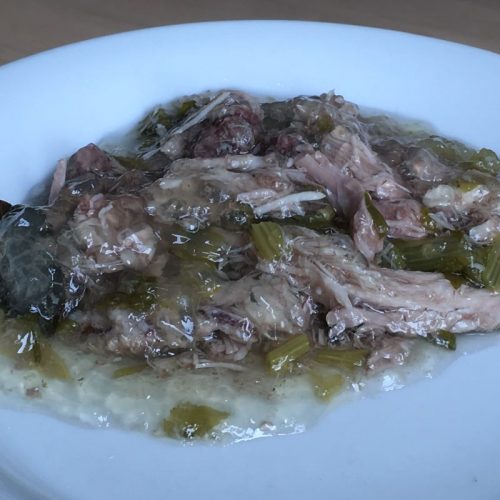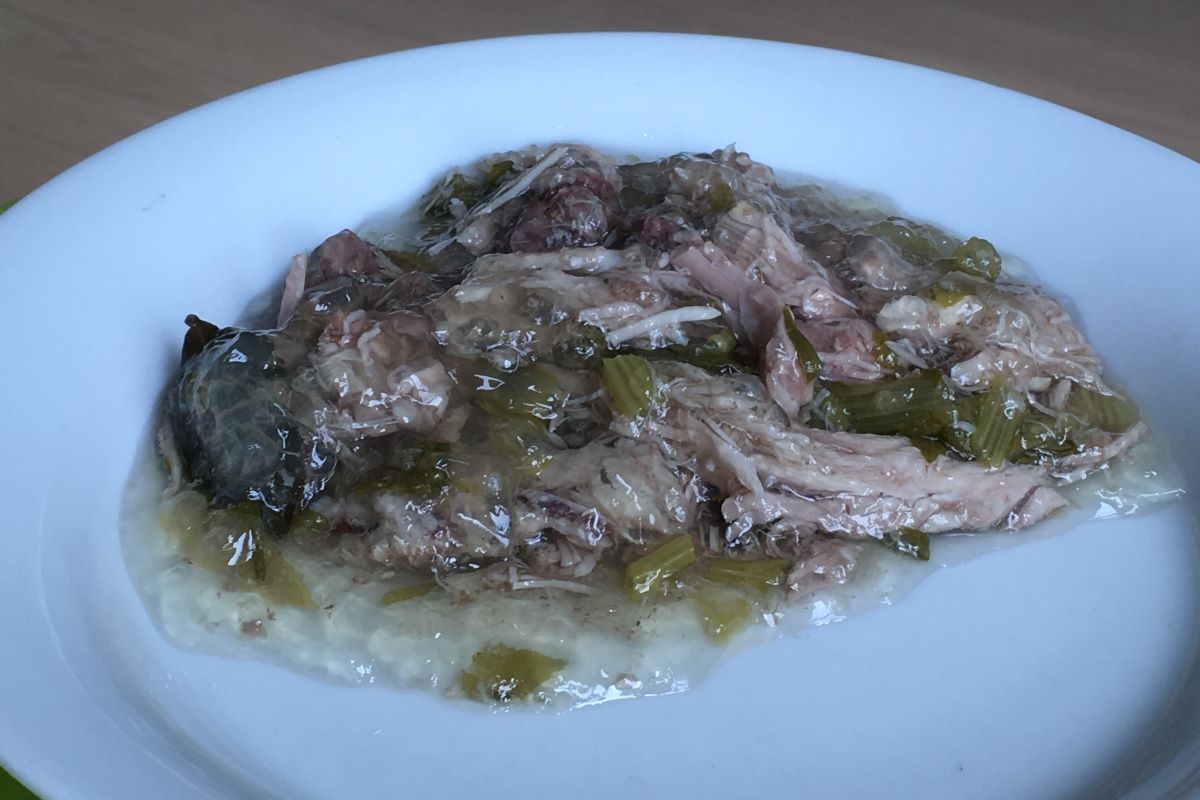Duck soup tasts slightly more intense than chicken soup. It falls in the range of poultry soups (turkey, chicken, duck, pigeon) that each provide a particular taste. And duck soup is often made as a side activity when deboning a whole duck for other purposes. Let nothing goes to waste!
The art of making duck soup
Please refer to the broth section where we explained about the importance of having bones to make a nice tasting soup. For this soup this is no different. When deboning a duck, for example to make a pate de campagne , duck breast or to render duck fat, the bones will be left. Then use the wings, the leg bones and feet (if available) and the carcass to make this wonderful soup. Do not use too much water to create an intense flavor.
Special equipment
None

Duck soup
Ingredients
Ingredients
- 1 duck carcass, wings and leg bones
- 1.5 tsp salt
- 1/4 tsp ground pepper
- 3 bay leaves
- 1/2 onion (washed, but peel on)
- bunch of fresh cellery leaves or cellery stick
- 1/2 carrot (3.5 oz or 100 g)
- 3.5 oz (100 g) culliflower
- 1/2 tsp chicken powder (optional)
- 2-3 quarts (2-2.7 Liters) water
- 1 tbsp duck fat or vegetable oil
Instructions
Instructions to make the soup
- Take a large enough pan and start to heat up the fat or oil
- Place the bones and carcass in the pan. Optionally cut the carcass in halves
- Lightly brown the bones at medium heat; now and then turn these
- Add the onion in a few pieces
- Add the water, the bay leaves and the pepper
- Bring slowly to a simmer, keeping the lid ajar
- Simmer for 1.5 - 2 hours, until the meat can be easily removed from the bones
- Take the bones out and separate the meat from the bones. Discard the bones and reserve the meat
- Add the meat back to the broth and add the other vegetables cut at bit size portions. If you use this broth as the base for a glace, reserve the meat for a ragout or stew and don't add vegetables
- Simmer for 15 minutes more
- Serve the soup. Taste will improve further overnight in the refrigerator.
Notes
Remarks
- The soup displays a gelly appearance when cold, with some fat patches on top. It disappears upon heating the soup and comes back upon cooling. The most intense tasting broth types display this behavior. It is the collagen from the bones that converts to gelatin during the simmering.
- Soup can be stored for several days in the refrigerator or frozen for a few months.



